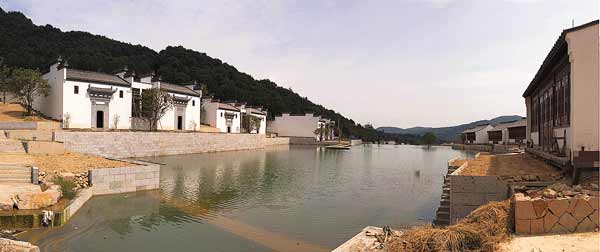

 |
|
Ahn Luh Lanting resort in Shaoxing, Zhejiang province features antique houses and furniture from Qin Tongqian's collection. |
With an investment of 700 million yuan ($115 million), the "painstaking construction process" began in 2009 and expected to finish at the end of 2014. The park consists of a swimming pool, two restaurants, a library, and 35 quaint mansions as residences, all reassembled from Qin's collections. Even the stone bridge stretching over the stream inside the resort is a century-old piece recycled from a water town in East China.
"They (the antique houses and furniture) are only animated when there are human beings living inside and with them, or more transcendentally, communicating with them," says Qin, explaining why he didn't opt to create a museum instead.
"Every piece of carving, be it brick, wood or stone, is a century-old book, in which our ancestors tried to pass down his life lessons through the vivid and elaborate craft," he says. Above him on a camphor-wood corbel is a carved illustration from a Chinese folk tale telling children to fulfill their filial duty.
Of course, learning these "life lessons" doesn't come cheap. One night at the resort could be as pricey as $1,000.
But Qin is confident the rooms will sell for themselves - in fact, he plans to develop similar resorts in the opulent Yangtze River Delta to "make full use of his collections".
To help preserve some of the dying craftsmanship at the heart of his collection, Qin plans to build a workshop beside every resort, having those senior craftsmen showcase how they polish, fix, and restore the rotting wood carvings and other components.
Paying money helps, he says, but paying respect is important, too.
| Black is losing its luster |